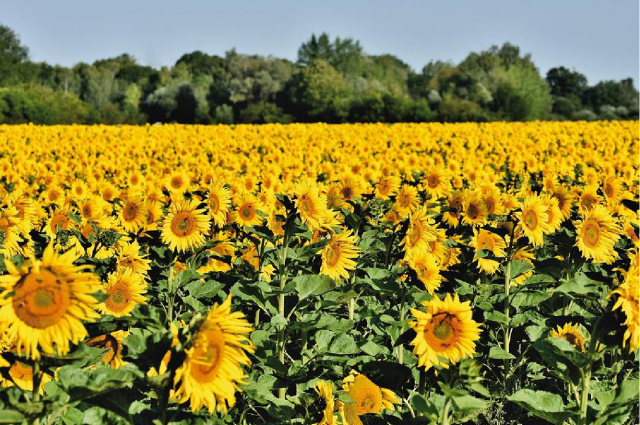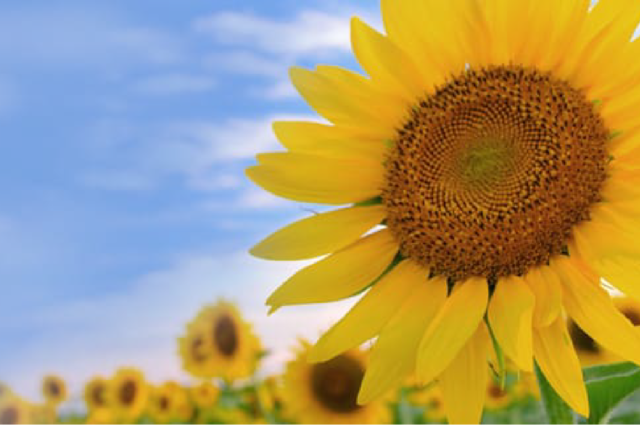Planting Wildlife Sunflower Recommendations
Planting is perhaps the most important part of establishing a good wildlife plot. For sunflower, good soil to seed contact is important. A firm seedbed is a good foundation for establishing the desired stand and plant population. Good soil moisture is important to even emergence.
Sunflower can be planted any time after soil temperatures reach 50oF. Timing of wildlife food plots can be tricky but in general sunflowers bloom 65-75 days following planting and seed matures about 40 days following petal drop. Planting should be complete around the first week of May. Sunflowers have a tendency to speed up as temperatures and daylight increase so this is not an absolute planting date.
Game Plan CL is packaged in units of 75,000 kernels. This unit will cover 3.5 to 4.5 acres depending on desired planting rate. A final stand of 15,000 to 18,000 plants is recommended for a successful wildlife plot. To achieve a final stand of 15,000 a planting rate of 16,500 seed is recommended. A final stand of approximately 18,000 plants will require a seeding rate of 19,500 seed. Areas of lower rainfall or with no irrigation possible should use the lower rates while higher rainfall or irrigated plots could use higher rates.
Planting depth for sunflower should be just deep enough to ensure good soil to seed contact in moisture. Sunflower planting depths of 1.5 to 2 inches is optimal but in good soil conditions can emerge from slightly deeper planting depths. The most important part of planting is ensuring good soil to seed contact.
While food plots are not generally focused on yield, a good rule of thumb is that 5 units of Nitrogen are needed for every 100 lbs of sunflower seed yield. Total available Nitrogen should be determined by soil tests. Sunflowers are recognized as good “miners” and are capable of utilizing soil nutrition from depths that other crops find unavailable.
Weed control is important in a wildlife food plot. There are many options depending on the level of control desired. A good yellow herbicide will control many species of weedy plants and can be used in sunflower plots. These Game Plan CL sunflowers are resistant to the Clearfield herbicide Beyond. Beyond is the only Clearfield herbicide labeled for Clearfield sunflowers. Be careful to follow Beyond label instructions and follow the recommend application timing. Often grassy weeds are problems in sunflower plots. Ask your chemical representative about herbicides that can eliminate grassy weeds in broadleaf crops. Several such herbicides are readily available.
Be sure to scout your plot regularly. Insects can be a problem in sunflower but the most destructive insect is the sunflower head moth. If this insect is present or has historically been a problem ask your chemical representative to recommend an insecticide. Several insecticides are available to control this insect. Damage caused by the head moth can lead to other fungal diseases that reduce seed set and seed maturation.
There are many sources of good information regarding food plots on the web. Be sure to check out the National Sunflower Association’s website. In the menu select the “grower” option. On the grower page there will be a menu on the right side of the page with several topics mentioned above. https://www.sunflowernsa.com / https://www.growers.com
Many State Wildlife Departments or Departments of Natural Resources as well as Cooperative Extension agencies offer direction for wildlife plots in your state. Be sure to follow their recommendations which may be more specific to your particular planting situation.
©Copyright 2016. This information may have been accumulated from publicly available sources outside of Dyna-Gro Seeds, or its affiliates. Individual results may vary, and performance may vary from location to location and from year to year. This result may not be an indicator of results you may obtain as local growing, soil and weather conditions may vary. Dyna-Gro® is a registered trademark of Loveland Products, Inc. Featured logos are service/trademarks of their respective owners.


